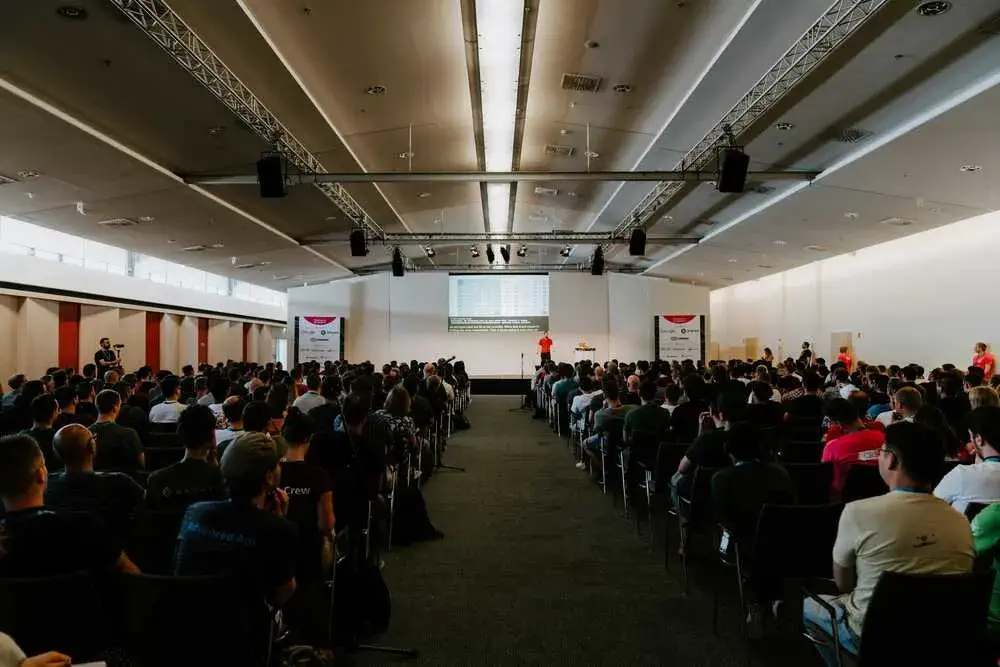At every juncture in life, there is an opportunity to be a part of a team. It doesn’t matter if it’s recess in grade school, organized sports in high school, the debate team in college, or a collaborative effort at work. The saying, “teamwork makes the dream work,” applies throughout your life.
However, is teamwork always good? Keep reading to learn more about how to build teamwork in the workplace and the pitfalls to avoid.
Why Teamwork in the Workplace Matters
Workplace teamwork matters because it is often the glue that holds your organization together. It is a true sign of leadership; it impacts the company’s goals and its financial bottom line.
Clear Communication
To keep employees strategically aligned, communication must be clear from the top. Too often, employees are blamed when implementation fails. When this happens, it is important for leadership to retrace their steps. It is not uncommon to learn that the error happened long before the objectives reached the employees. “61% of employees do not know their company’s mission statement.”
Better Engagement
Incorporating employee engagement gives your teams more accountability in the company’s success. Employee engagement retains top talent. People can only grow if they are active and willing participants in the process.
Engagement shows their investment in the company and builds a long-lasting partnership. Hold meetings with relevant stakeholders, host brainstorming sessions, and don’t be afraid to have team bonding events.
Efficient Problem Solving
Building strong teams also builds an employee’s ability to problem-solve. Allowing employees to make mistakes without repercussions grows confidence. It also gives them more confidence to step-up when new training or collaborative projects are presented in the future.
A Sense of Ownership
Teamwork in the workplace gives employees a sense of ownership. When employees feel ownership, they are more invested in the outcome. Successes and failures take on new meaning.
Ownership means taking responsibility and working to reach the most beneficial conclusion.
Creativity and Risk-taking
When team members feel valued, they’re more likely to be creative and take risks. This does not translate into a free-for-all, do-what-you-want level of thinking. Instead, it removes mental limitations employees often place on their growth.
Encouraged employees think outside the box, and this mindset opens the team to new ways of addressing projects.
Curious about your team members’ thoughts on a project? Use MeetingPulse’ real time survey tool.
When Is Teamwork Good?

When teamwork is good, everyone knows it from upper management to the client. Businesses rely on strong teamwork to provide the highest level of service to both internal and external clients.
They also need to know they can trust everyone to come together when it’s time for product rollouts, onboarding new clients, or providing honest feedback on getting to the next level.
Developing a New Idea
It’s one thing to have a new idea — it’s another to bring it to fruition. Workplace teamwork involves bringing the right people together for each phase of the project. Teamwork also happens between departments not directly related to each other.
Businesses rely on cross-departmental collaboration. IT develops a new application, sales has to get the client on board, and customer success sets the client up and relays information. An idea isn’t fully developed until the client agrees without any issues.
Optimizing Workflow
With multiple business units working on the same project, companies turn to SCRUM or an Agile approach to project management. These techniques optimize workflow by dividing tasks among smaller groups to become more effective in service delivery.
Working on Long-term Projects
The Agile approach is even more beneficial on long-term projects because it presents an opportunity for organizations to better manage the project. It also gives team members more time to better understand how their role and division is vital to the success of other business units.
These collaborations let senior levels of the company know if there is true cohesiveness or veiled dysfunction.
When Is Teamwork Not So Helpful?
One misconception is that employees always have to be team players. Someone who is task-oriented or seen as a loner might be accused of not being a team player, but this is not always true.
If a manager needs 100 packets put together by 5 PM, everyone doesn’t have to stop their work to pitch in. Bob, who is quiet, may be busy with another task that has a 3 PM deadline. He shouldn’t be called out as a non-contributor because he is prioritizing his duties.
Maria may be very task-oriented, so she might offer to take on the project alone. It shouldn’t be seen as showboating or an unwillingness to work with others. Both employees are working toward the common good of the business by servicing a client’s needs.
Teamwork Pitfalls to Avoid

For every positive aspect of building teamwork in the workplace, there are also downfalls. Here, we take a look at a few of them.
Unequal Workloads
Unequal workloads can happen when a few team members are very efficient or organized. Managers believe that, by assigning additional tasks and responsibilities to these individuals, it is a compliment. In reality, it tells other team members they don’t have to work as hard.
Escalating Conflict
Conflict can easily arise when one person is seen as not doing their fair share, while others take on a bigger burden. Animosity can also arise if employees believe the manager is showing favoritism.
It is vital to a team’s success that everyone is treated equally, and managers remain transparent when making decisions.
Bad Attitude
The only attitude that is welcomed in the workplace is a positive one. No one should be allowed to sour the workplace atmosphere.
When it is noted that someone is becoming toxic to the work environment, the manager must step in to get an understanding of what’s going on. If it is something internal, devise a plan to address it. For external problems, consult with the company’s Employee Assistance Program.
Unclearly Defined Goals
Employees working in an environment where their goals are not clearly defined can create chaos in the workplace. This is no excuse for an employee to sit back and fail, or play a role in someone else’s failure.
Each individual has a responsibility to speak up when tasks and objectives are not clear. By remaining silent, it creates a trickle-down effect that impacts the team and eventually the client.
Poor Communication
Poor communication is often at the root of all dysfunctional workplaces. The lack of communication between team members, or between one person and a member of management, can change the dynamics of the entire department.
Managers have the responsibility of communicating with their teams and ensuring everyone is on the same level. Just as companies offer external surveys to gauge where they are with clients, managers should do the same within their departments.
Meeting Pulse allows you to survey your employees in a fair and professional way.
How to Make Teamwork Work
This is the part we love. How do we take everything we’ve talked about thus far and make it actionable to build a better workplace?
Share the Burden
Ensure that everyone is doing his or her fair share. It is okay to reassign tasks to assist with workflow. Ask before doing so, so you aren’t putting undue stress on someone else.
Collaborate
Instead of assigning roles based on what you believe is best, give members of your team opportunities to collaborate. Use it as a way to bring out inner strengths and creativity.
Communicate Frequently
Keep the lines of communication open. Use a means to deliver the same information at the same time to everyone. Ask questions if you are not getting feedback.
But Not Too Frequently
Do not overwhelm your teams with too much information at once. Consider creating a weekly department newsletter or make an information digital display. Create an environment where people aren’t afraid to ask questions.
Be Clear About Objectives
Put your expectations in writing and hand them out in a group session. Set aside time for a Q & A. Before closing the meeting, reiterate the objectives.
Looking for tools to facilitate teamwork? Use Meeting Pulse to engage your team.
Elements of a Collaborative Workplace

There are certain elements that make up a collaborative workplace. These are things you can do to help your team members appreciate their contributions and feel like they belong on the team.
Asking for Feedback
Ask for feedback. Use instant messenger or set up a group chat on Facebook or another app. Send out surveys.
Holding Brainstorm Sessions
Weekly meetings consume an estimated 300,000 hours a year. Conducting brainstorming sessions are crucial for a collaborative workplace. Before calling a session, have clear objectives.
Incorporating online apps empower collaboration, help teams track progress, and introduce new ideas without having to physically gather in one location.
Related: How to Have Better Brainstorming Sessions
Being a Facilitative Leader, not Authoritative
Understand that tone matters. When calling a meeting, don’t preach to your team. Make them feel as if their voice is important to the conversation. Lead the discussion in a way that engages the audience.
Improving Transparency
Improve transparency by being upfront and honest about decisions that affect their positions. Employees have greater respect when management is transparent.
On the other hand, do not create chaos by oversharing. If an employee comes to you with a rumor, consult with upper management for a response.
Sharing the Workload
There are times when sharing the workload is necessary to reach metrics guaranteed to clients. If customer relations is overwhelmed by year-end calls, account management should not feel it is beneath them to take calls for one hour a day.
Cross training is valuable in emergency situations when one division is closed due to an unforeseen occurrence such as a natural disaster.
The Takeaway
Are you confident that you can instill a culture of teamwork in the workplace? It’s up to you to create pathways of communication at your business and set a good example for your employees.
Send a message that collaboration is welcome by frequently asking for feedback, holding brainstorm sessions, and leading with facilitation, transparency, and open-mindedness. Know the pain points we’ve listed above so you’re prepared to eliminate challenges. And don’t forget to use teamwork when it will most benefit your goals.
Are you looking to change or improve your workplace culture? Check out our services at MeetingPulse.
With our innovative platform, you can hold brainstorm sessions and invite employees to share ideas in real time. You can send out surveys during meetings to ask for feedback, and even collect live audience sentiment during an ongoing session so you know if your collaborative efforts are working.
Teamwork doesn’t have to be that complicated. And with MeetingPulse, it’s even easier.
Related: How Much Time is Your Company Wasting in Meetings?






